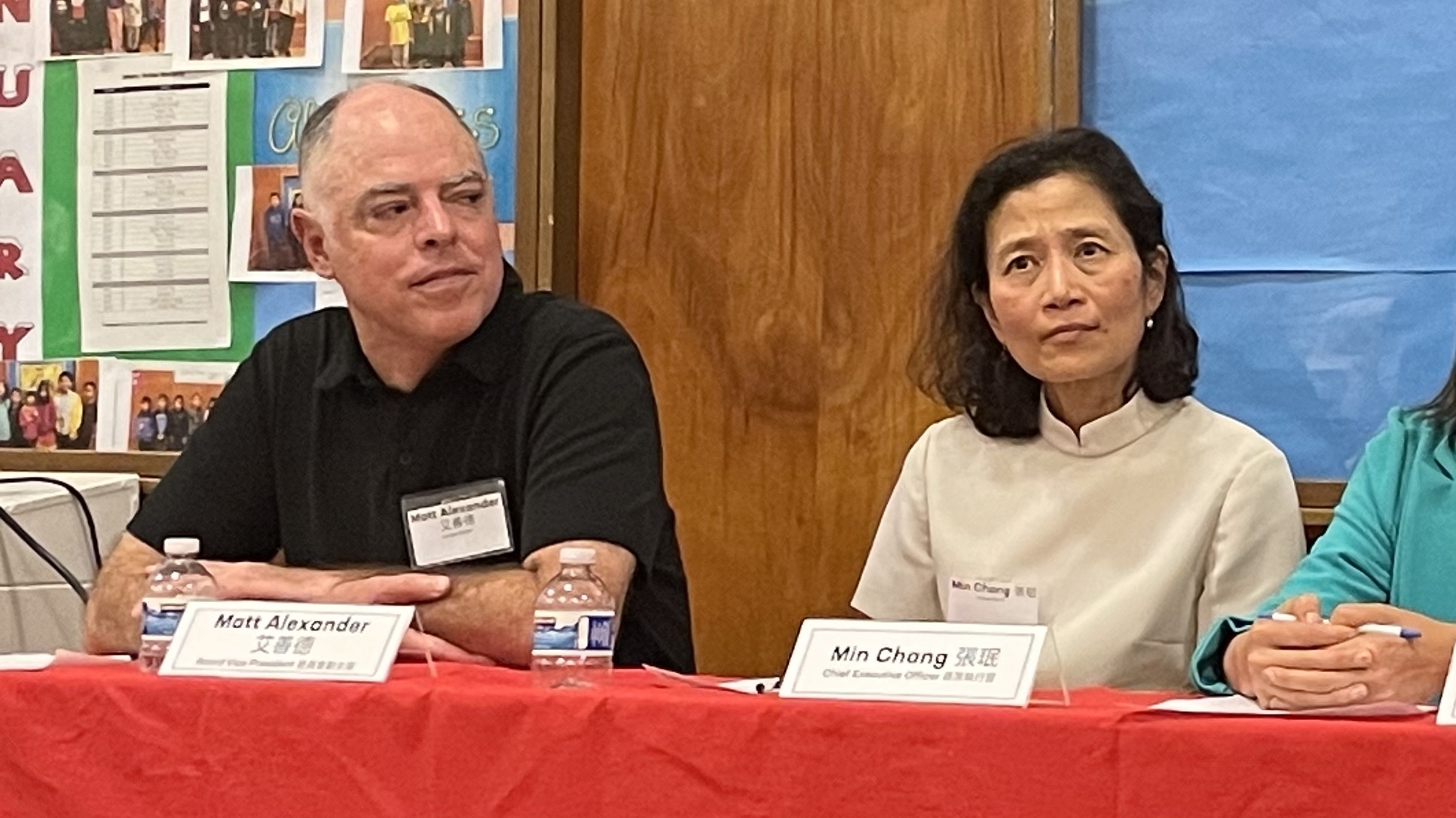[ad_1]
The San Francisco Municipal Transportation Agency’s board unanimously approved the new curbside Valencia Street bike lane on Tuesday, and admitted that the transit agency should have been more cautious with experiments in merchant corridors.
That experiment — a bike lane running up the center of the street — had pitted transit advocates against shopkeepers. Now cyclists and the Valencia Corridor Merchants Association were finally on the same page: Neither were fans of the new design.
“The [merchants association] cannot officially support the side-running bike lane,” said Manny Yekutiel, president of the Valencia Corridor Merchants Association, which has fought the old design. Yekutiel was one of dozens who spoke up in the three-hour-long meeting held at City Hall.
Yekutiel, echoing long-held concerns from merchants against streetscape changes, said the new design will get rid of a lot of the parking spots on Valencia Street. “We’re worried it will affect business.”
The design will remove about 79 parking or loading spots, or 40 percent of the 225 spaces on Valencia from 15th to 23rd, according to SFMTA
Although it was lambasted for months, some cyclists today lamented the end of the center lane. Erin Fieberling, a bicyclist who lives in District 9, said the current center lane makes them feel safe. It’s “a straight, clear, predictable path with no interruption,” they said, adding that it actually made them more likely to use local shops. “I use the Valencia Street bike lane most often to travel to local businesses on Valencia Street.”
For its part, the board acknowledged that the Valencia Street bikeway pilot, started August 2023, has been a failure. “We have to be very careful about experimenting in commercial corridors,” said board vice chair Stephanie Cajina. “That requires a certain level of care that perhaps we did not perceive when we initially approved this particular item. It’s a big learning.”
The controversy surrounding the center bike lane pilot program often involved neighborhood merchants who said the project harmed their business.
But both a Mission Local analysis and the city controller’s office found that to be untrue: The bike lane had no impact on sales on the corridor. Instead, the sales decline might have reflected a general slowing of the economy.
Still, the pilot project was met with scorn and the SFMTA decided in February to reverse course after just six months and install more conventional, side-running lanes.

The new design will include parking-protected lanes on Valencia between 15th and 23rd streets. The design will also bring changes to the parklets along the street. Most will remain alongside the curb, but three will be rebuilt into “floating parklets” separated from the sidewalk by the bike lane.
The floating parklet design is new to San Francisco, but has worked in Oakland and New York City, according to the SFMTA.
SFMTA will add more motorcycle and scooter parking spaces, and advertise two SFMTA-owned parking garages at 16th and and 21st streets that are rarely full.
Paul Stanis, an SFMTA project manager, said the new design was the result of balancing safety, mobility and economic vitality.
While data the agency collected showed the center-running bike way generally made riding along Valencia Street more predictable, it did not work for everybody.
The side-running bike lane is expected to be more predictable and more familiar for people to navigate, said Stanis.
The SFMTA is expected to begin the construction in January 2025, and the process will take two to three months, depending on weather conditions.
Despite the anger from attendees, board director Mike Chen expressed a certain degree of support for the centered lane. “I want to underline that I don’t think that the center-running lane was a failure from the point of view of bicycle safety. There are maybe other places in San Francisco where this center-running lane could be appropriate.”
The SFMTA reached the final block by block design after making changes with feedback collected during their 10 months of community outreach. That included two community open houses in September, a mailer to nearby residents and businesses, meetings with over 100 merchants, and conversations with those who own parklets on Valencia Street.
Additionally, the SFMTA is having a monthly construction working group meeting to minimize the impact of construction work, with inputs from merchants, construction staff, project team, and advocates.
“Finally, I just wanted to acknowledge that this is a very complicated, challenging and even at times rewarding project,” said SFMTA project manager Stanis. “In reality, probably 30 or 40 people have actually worked on this project at one point or another … We feel it represents the best that we can come up with given all of the input, consideration and constraints.”
“We have a lot left to do, but we are excited to get some of our weekends and nights and some of our holiday time back,” he added.
[ad_2]
Source: missionlocal.org






